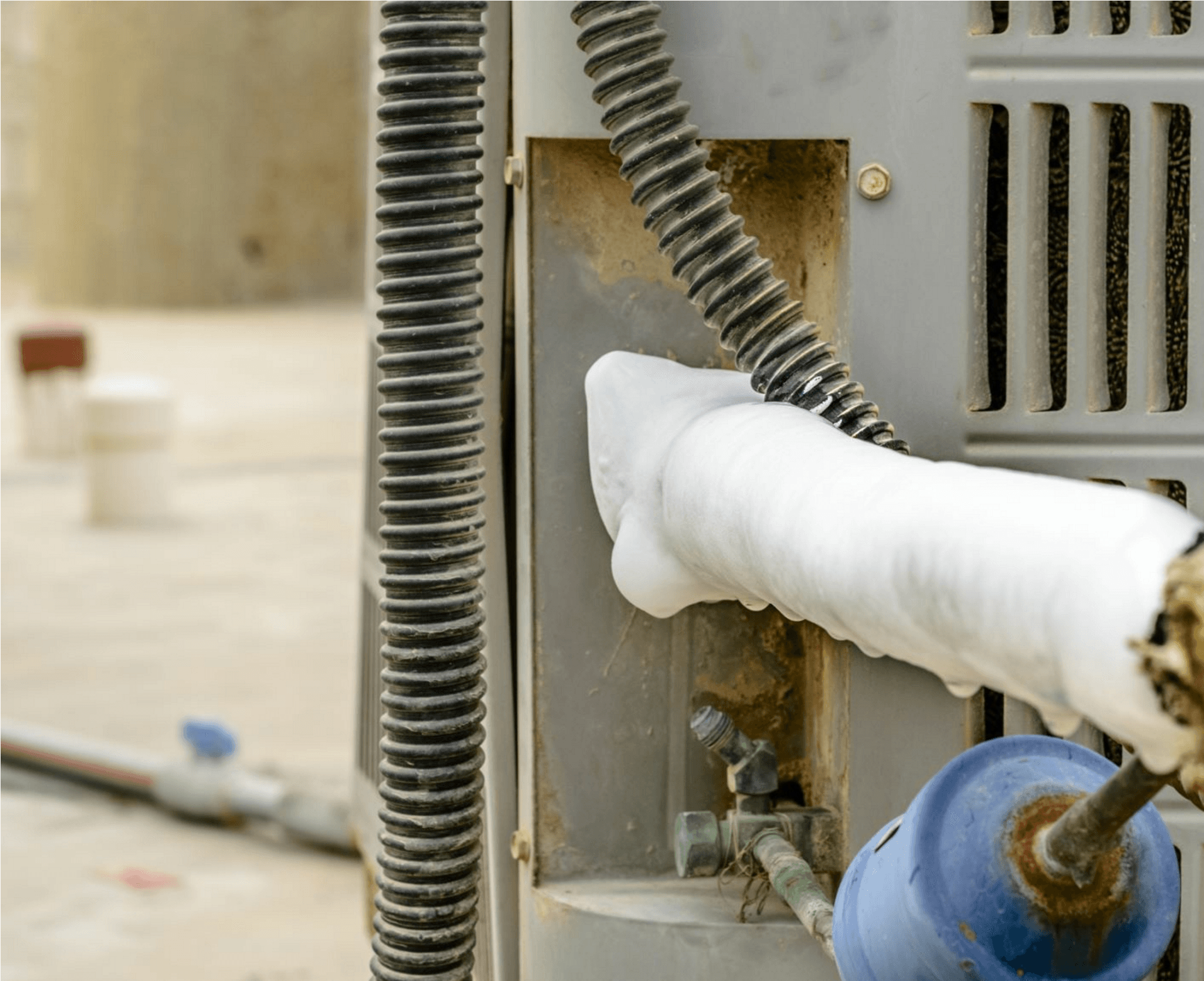Ways to Thaw Out a Frozen AC Pipe: Specialist Advice
Ways to Thaw Out a Frozen AC Pipe: Specialist Advice
Blog Article
Do you find yourself looking for facts around What Do I Do If My AC Pipe Is Frozen?

Introduction
Uncovering that your air conditioner pipe is iced up can be worrying, especially during hot summertime when you count on your a/c unit one of the most. Comprehending what to do in such a circumstance is vital to stop additional damage to your cooling system and ensure your convenience indoors.
Understanding the Causes
Numerous variables can add to the cold of an a/c pipeline. Recognizing these causes can help you resolve the problem effectively.
Absence of Airflow
One common source of a frozen AC pipeline is inadequate airflow. When the air movement over the evaporator coil is restricted, it can cause the coil to go down below freezing temperature level, resulting in ice development on the pipe.
Low Refrigerant Levels
Not enough refrigerant levels in your air conditioner system can likewise result in a frozen pipe. Reduced cooling agent levels can cause the pressure in the system to go down, bring about the cold of wetness on the evaporator coil.
Winter Conditions
In cooler environments, freezing temperatures outside can contribute to the freezing of AC pipes. If your air conditioning system is not correctly protected or if there are leaks in the ductwork, chilly air can infiltrate the system, triggering the pipeline to ice up.
Dirty Air Filters
Filthy or clogged up air filters can restrict air flow in your air conditioner system, bring about different problems, consisting of a frozen pipe. It's important to change or cleanse your air filters frequently to guarantee proper air movement and protect against ice build-up.
Indications of a Frozen Air Conditioning Pipe
Identifying the indications of an icy air conditioning pipeline is important for punctual action.
Lowered Airflow
If you notice a substantial decrease in airflow from your vents, it might show an icy pipeline.
Ice Buildup on the Pipe
Noticeable ice buildup on the refrigerant line or the evaporator coil is a clear indicator of an icy air conditioner pipeline.
Strange Sounds from the Unit
Unusual audios, such as hissing or gurgling, originating from your AC unit can signal that there's ice present on the pipe.
Immediate Actions to Take
When faced with an icy air conditioner pipeline, it's necessary to act rapidly to prevent further damage to your air conditioning system.
Switching off the a/c
The primary step is to turn off your a/c to avoid the system from running and worsening the issue.
Looking for Blockages
Check the area around the interior unit for any kind of obstructions that might be blocking air movement, such as furniture or curtains.
Defrosting the Pipe
You can utilize gentle techniques like placing towels taken in cozy water around the icy pipe to assist thaw it slowly.
Safety nets
Taking safety nets can assist stay clear of future occurrences of a frozen air conditioner pipe.
When DIY Methods Fail
If your attempts to thaw the pipe or address various other concerns are unsuccessful, it's time to contact a specialist.
Importance of Hiring a Professional HVAC Technician
A certified HVAC specialist has the experience and devices essential to detect and repair problems with your air conditioning system safely and efficiently.
Regular Maintenance Checks
Schedule regular upkeep get in touch with a specialist HVAC service technician to ensure that your air conditioner system is running successfully.
Altering Air Filters
Routinely change or cleanse your air filters to prevent air movement limitations and keep ideal efficiency.
Insulating Exposed Pipes
If your a/c pipes are subjected to cold temperature levels, take into consideration shielding them to avoid freezing during winter months.
Looking For Professional Help
If DIY methods fall short to solve the problem or if you're uncertain concerning exactly how to proceed, it's ideal to look for support from a certified HVAC service technician.
Conclusion
Handling an icy a/c pipe can be an irritating experience, however knowing exactly how to react can assist decrease damage and recover comfort to your home. By comprehending the causes, identifying the signs, and taking punctual activity, you can successfully deal with the issue and avoid future events.
What to Do If Your AC Line Is Frozen
Make Sure All Supply and Return Air Vents Are Open
If you notice problems with airflow, the first thing you should do is check your supply and return vents. Supply vents distribute clean, conditioned air throughout your home. As this air becomes stale, it’s pulled into the return vent, where it’s reconditioned before being sent back out through the supply vent.
When these vents are closed, air won’t flow in the home. Before examining your AC, check the vents in every room and ensure they’re all open.
Check for a Dirty Air Filter
Another possible cause of limited airflow is a dirty air filter. Your air conditioner’s filters catch elements you don’t want to breathe in, such as dirt and dust. Over time, filters can become clogged, ultimately blocking air from flowing in and out. The lack of airflow can then cause the entire coil to freeze and will completely restrict any air from moving through it. The AC may need to be powered off for one to two days to allow the coil to thaw after replacing the filter to allow proper functioning of the unit. This debris can also accumulate on your AC’s evaporator coil, requiring a more serious repair. In general, air filters should be cleaned regularly (about every two weeks).
Assess Your Outdoor Unit
In addition to checking your AC, assessing the outdoor unit is a good idea. Also known as the condensing unit, it works with your interior unit to release heat outside. An issue with the outdoor unit can result in rising internal temperatures.
Overgrown Shrubs or Clogged Leaves
From leaves and twigs to shrubs and debris, there’s no shortage of outdoor elements that can accumulate around your condensing unit. When these elements get lodged inside the unit, they can block airflow. Fortunately, removing the blockage can solve the problem.
Sounds of a Broken Fan
Shrubs and leaves aren’t the only things that can impede your outdoor unit’s airflow. If the fan is broken, the unit won’t be able to properly get rid of heat — which means the internal temperature won’t go down. First, make sure the fan is spinning. If it is, check for the following sounds of a broken fan:
Buzzing Rattling Screeching Hissing Clicking Preventative Measures
Nobody wants to deal with a frozen AC line. In addition to causing problems with your air conditioner, they require professional repairs. On the bright side, there are preventative measures you can take to help ensure this issue doesn’t arise in the first place.
https://www.coopergreenteam.com/blog/what-to-do-if-ac-line-frozen

Hopefully you enjoyed our excerpt about How can I fix an air conditioner’s frozen pipe?. Thanks so much for finding the time to read our article post. Sharing is good. Helping people is fun. Thank you for taking the time to read it.
Request An Appointment Report this page